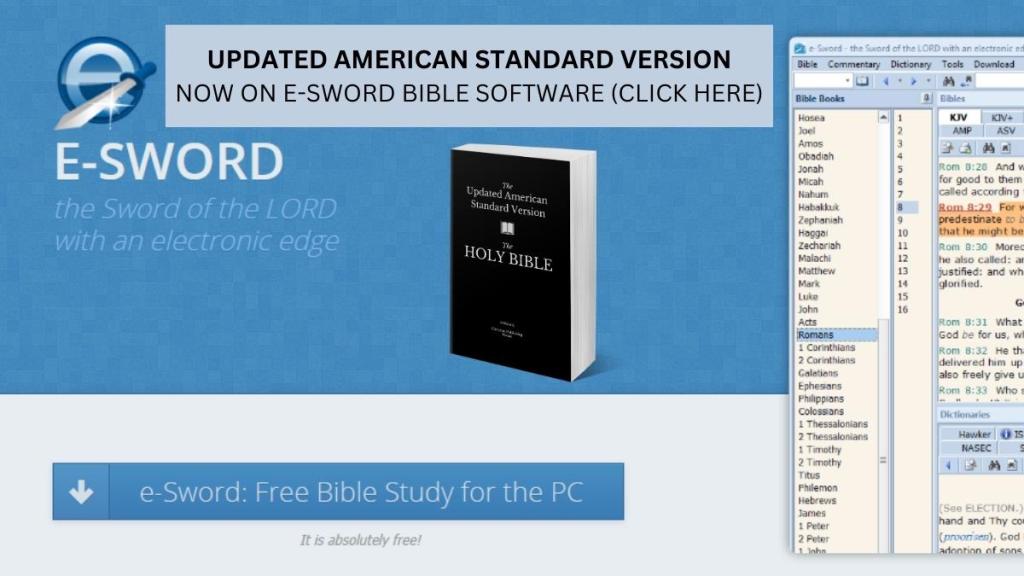
Please Help Us Keep These Thousands of Blog Posts Growing and Free for All
Yes, some bias lies ahead. But below is a basic introduction to the Bible translation process that you will want to see. But read through this small introduction to get there.
CPH BLOH: UPDATED AMERICAN STANDARD VERSION (UASV)
OFFICIAL WEBSITE: UPDATED AMERICAN STANDARD VERSION (UASV)
OUR PURPOSE
Our primary purpose is to give the Bible readers what God said by way of his human authors, not what a translator thinks God meant in its place.—Truth Matters!
OUR GOAL
Our primary goal is to be accurate and faithful to the original text. The meaning of a word is the responsibility of the interpreter (i.e., reader), not the translator.—Translating Truth!
Why UASV?
The translation of God’s Word from the original languages of Hebrew, Aramaic, and Greek is a task unlike any other and should never be taken lightly. It carries with it the heaviest responsibility: the translator renders God’s thoughts into a modern language. The Updated American Standard Version (UASV) is a literal translation. What does that mean?
Removing the Outdated:
- Passages with the Old English “thee’s” and “thou’s” etc. have been replaced with modern English.
- Many words and phrases that were extremely ambiguous or easily misunderstood since the 1901 ASV have been updated according to the best lexicons.
- Verses with difficult word order or vocabulary have been translated into correct English grammar and syntax, for easier reading. However, if the word order of the original conveyed meaning, it was kept.
More Accurate:
- The last 110+ years have seen the discovering of far more manuscripts, especially the papyri, with many manuscripts dating within 100 years of the originals.
- While making more accurate translation choices, we have stayed true to the literal translation philosophy of the ASV, while other literal translations abandon the philosophy far too often.
- The translator seeks to render the Scriptures accurately, without losing what the Bible author penned by changing what the author wrote, by distorting or embellishing through imposing what the translator believes the author meant into the original text.
- Accuracy in Bible translation is being faithful to what the original author wrote (the words that he used), as opposed to going beyond into the meaning, trying to determine what the author meant by his words. The latter is the reader’s job.
- The translator uses the most reliable, accurate critical texts (e.g., WH, NA, UBS, BHS, as well as the original language texts, versions, and other sources that will help him to determine the original reading.
Why the Need For Updated Translations
- New manuscript discoveries
- Changes in the language
- A better understanding of the original languages
- Improved insight into Bible translation
- Among other things
Please Help Us Keep These Thousands of Blog Posts Growing and Free for All
TRANSLATION PHILOSOPHY
Basics of Translation Philosophy
Translating Things that Get in the Way of Understanding

Translating the Unknown

Idioms in Bible Translation

Bible Translation Philosophy

MEANING VS. FORM: Does It Matter How We Say Something?

The Making of a Worthy Translation

Different Kinds of Bible Translations

Gender-Inclusive Language in Bible Translation

The Bible Translation Debate

Function Vs. Form – a False Dichotomy

Defining (And Redefining) [Bible Translation] Terminology

Why the Bible Is Different From Other Great Books

The Basics of the Bible Translation Process

Please Help Us Keep These Thousands of Blog Posts Growing and Free for All
SCROLL THROUGH DIFFERENT CATEGORIES BELOW
BIBLE TRANSLATION AND TEXTUAL CRITICISM
BIBLICAL STUDIES / INTERPRETATION
EARLY CHRISTIANITY
CHRISTIAN APOLOGETIC EVANGELISM
TECHNOLOGY
CHRISTIAN THEOLOGY
TEENS-YOUTH-ADOLESCENCE-JUVENILE
CHRISTIAN LIVING
CHRISTIAN DEVOTIONALS
CHURCH ISSUES, GROWTH, AND HISTORY
Apocalyptic-Eschatology [End Times]
CHRISTIAN FICTION
Like this:
Like Loading...






























































































































































































Leave a Reply